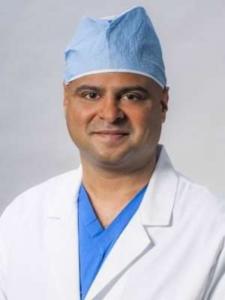Gracias a la tecnología informática, que proporciona información adicional sobre la articulación durante la cirugía de sustitución, los cirujanos pueden lograr tasas de reproducción más elevadas, con un menor riesgo de complicaciones tanto durante la intervención como después de ella.
¿Cuáles son las ventajas de la cirugía de prótesis articular asistida por ordenador?
El cirujano utiliza la sustitución articular asistida por ordenador para varios tipos de operaciones de sustitución articular. Esto incluye las dos operaciones de prótesis articulares más frecuentes en EE.UU.: prótesis de rodilla y prótesis de cadera.
Aunque estas cirugías ya se asocian a altos índices de éxito, cuando surgen complicaciones, lo más frecuente es que se trate de una desalineación de los componentes de la articulación o de otros problemas que afectan a la posición de la articulación y que acaban provocando un desgaste desigual o excesivo de la articulación y, a la larga, su aflojamiento o deslizamiento.
En la actualidad, los productos para articulaciones artificiales están diseñados para que cada pieza dependa de otra para obtener resultados óptimos. Incluso un mínimo grado de error en la colocación de un componente de la junta puede dar lugar a una desalineación muy pequeña. Ese error puede tener consecuencias importantes en lo que respecta a la función y la comodidad.
La tecnología asistida por ordenador utiliza imágenes bidimensionales y tridimensionales en tiempo real de la articulación. Esto es sólo para proporcionar retroalimentación «en vivo» del procedimiento para la colocación de los componentes de la articulación para obtener resultados superiores.
¿Cómo realizar una cirugía de prótesis articular asistida por ordenador?
Las técnicas asistidas por ordenador utilizan una serie de sondas electrónicas especiales fijadas al paciente en lugares específicos para permitir la visualización relacional bidimensional y tridimensional de la articulación, los instrumentos quirúrgicos, los componentes del implante y los tejidos circundantes. Imágenes transmitidas a un monitor para su visualización.
Las sondas informáticas son muy sensibles, y la información que proporcionan desempeña un papel fundamental en los procedimientos de sustitución articular mínimamente invasivos. Dado que las sondas detectan continuamente cambios en la posición de relación entre la articulación natural y los componentes protésicos y los instrumentos quirúrgicos, el cirujano puede realizar ligeros cambios intraoperatorios para ayudar a conseguir resultados óptimos basados en la anatomía única de cada paciente.
¿Soy candidato a la cirugía de prótesis articular asistida por ordenador?
La sustitución de la rodilla, la cadera y otras articulaciones se reserva para pacientes en los que los métodos más conservadores, como la medicación y la fisioterapia, no han proporcionado un alivio continuado y significativo, y para pacientes en los que esas opciones conservadoras no son prácticas o recomendables. Aunque las técnicas quirúrgicas asistidas por ordenador pueden utilizarse en muchos pacientes. La tecnología no siempre es la opción ideal para cada cirugía o cada paciente.
Una evaluación en profundidad de la articulación antes de la intervención quirúrgica mediante diagnóstico por imagen con o sin artroscopia para ver el interior de la articulación puede ayudar a determinar si se recomienda un abordaje asistido por ordenador. Otros factores también pueden influir a la hora de determinar el mejor enfoque quirúrgico. El cirujano discutirá los pros y los contras de las técnicas asistidas por ordenador durante la consulta prequirúrgica.
Aunque la tecnología de las prótesis articulares y las técnicas quirúrgicas han mejorado notablemente en la última década y el mayor uso de cirugías asistidas por ordenador y robot ha contribuido a mejorar la precisión y reducir las complicaciones, lo cierto es que la experiencia y la habilidad quirúrgica siguen siendo insustituibles. La cirugía de prótesis articular depende en gran medida de la evaluación de la articulación tanto antes como durante la intervención. Una preparación adecuada de la articulación y de los componentes de la prótesis y, por supuesto, una colocación exacta y muy precisa de los componentes para lograr los mejores resultados posibles.
Sustitución total de rodilla guiada por ordenador y sustitución robótica de rodilla
Con la intención de mejorar el curso de satisfacción del paciente, se han introducido en el mundo de las prótesis totales de rodilla la tecnología asistida por ordenador y la tecnología robótica.
Los estudios han demostrado que la colocación correcta de los componentes mejorará la longevidad de los implantes totales de rodilla. Para lograr una alineación correcta de la rodilla, es obligatoria la colocación precisa de los componentes en la prótesis total de rodilla. El eje mecánico de la extremidad inferior también se restablece mejor con una colocación precisa de las prótesis totales de rodilla.
Estas tecnologías robóticas y de navegación asistida por ordenador son útiles no sólo para la artroplastia total de rodilla, sino también para la artroplastia parcial.
Las tecnologías de rodilla total asistida por ordenador pueden clasificarse en tres tipos:
- Tecnologías sin imágenes que incluyen tecnologías basadas en acelerómetros.
- Tecnologías preoperatorias basadas en imágenes.
- Tecnologías de base intraoperatoria.
Las tecnologías sin imágenes pueden clasificarse a su vez en dos tipos. Tecnologías basadas en acelerómetros y en sistemas ópticos de navegación. KneeAlign (fabricado por OrthAlign System) es un ejemplo de sistema basado en acelerómetro. Utiliza un acelerómetro de mango que se fija al hueso y ayuda en la navegación, de forma similar a los sistemas de navegación sin imágenes basados en la óptica que guían la navegación por ordenador de la cirugía de prótesis de rodilla.
Las tecnologías asistidas por ordenador basadas en imágenes utilizan resonancias magnéticas o tomografías computarizadas preoperatorias para formar un módulo 3D. Intraoperatoriamente, los sensores colocados en el hueso captan las imágenes preoperatorias para ayudar a una mejor colocación de los componentes.
La prótesis total de rodilla asistida por robot es una extensión de la tecnología y un avance de la tecnología de navegación asistida por ordenador.
Actualmente disponemos de cuatro sistemas robóticos:
- Sistema Mako fabricado por Stryker.
- El sistema NAVIO de Smith and Nephew.
- iBlock fabricado por OMNIlife.
- Curexo fabricado por la empresa Robodoc.
El brazo robótico guía la mano del cirujano y este tipo de asistente robótico se denomina sistema «semiactivo». El cirujano es la persona que realiza los cortes y su mano es guiada por el robot.
Hay dos tipos de asistentes robóticos: uno totalmente activo y otro semiactivo. Mako es un sistema robótico de tipo semiactivo. Robodoc fue un sistema anterior, de los años ochenta, totalmente activo. Hubo un aumento de las complicaciones quirúrgicas con los sistemas totalmente activos debido a la lesión de los tejidos blandos alrededor de la cadera.
Hoy en día, utilizamos el sistema semiactivo que ofrece una coacción activa a los cortes y al fresado realizado en el hueso. El cirujano tiene un buen control sobre el proceso y recibe información tanto auditiva como táctil basada en un límite creado por el cirujano en el ordenador a partir de la planificación preoperatoria.
El uso de un robot para taladrar el hueso permite fresar el hueso en una sola fase, en lugar de ir talla a talla, ya que el cirujano conoce exactamente el tamaño de los componentes. El tiempo quirúrgico aún puede aumentar, especialmente en la parte inicial de la curva de aprendizaje del cirujano. En los procedimientos quirúrgicos asistidos por robot se requiere un tiempo adicional, especialmente con el registro del hueso necesario para que el robot pueda captar la arquitectura del hueso.
Además, los sistemas robóticos requieren un coste inicial para el robot y también para los incrementos de software que se producen con el tiempo. Las posibles complicaciones técnicas podrían incluir la motina en la interfaz hueso-pin durante el proceso de registro. Los pasadores pueden moverse y pueden cambiar la alineación de los componentes si el cirujano no tiene cuidado. El cirujano también tiene que asegurarse de que el registro es preciso para evitar errores en la colocación de los componentes. Pueden producirse defectos de fresado y brochado si el robot no se utiliza correctamente.
La literatura es clara al afirmar que la navegación asistida por ordenador se asocia a tiempos operativos significativamente superiores a los de la cirugía convencional. Esta bibliografía también ha demostrado que hay más probabilidades de que la colocación de los componentes sea óptima si se utiliza asistencia asistida por ordenador y si los componentes están correctamente alineados. Es de esperar que disminuya el riesgo de necesitar cirugía de revisión a largo plazo.
El cirujano debe sopesar los riesgos y los beneficios a la hora de elegir una técnica de cirugía asistida por ordenador.
Aparte del beneficio de ayudar a mejorar la alineación, la cirugía asistida por ordenador tiene la ventaja de ser menos invasiva porque con la cirugía asistida por ordenador no es necesario perforar el canal femoral para colocar las plantillas. Esto puede disminuir la pérdida de sangre intraoperatoria y en el postoperatorio. La navegación mejora la alineación en el plano coronal, pero algunos sistemas de navegación no permiten una mejor colocación en los demás planos.
La cirugía asistida por ordenador tiene desventajas y limitaciones. La navegación asistida por ordenador conlleva un coste quirúrgico adicional. También hay ciertas cuestiones que son muy específicas de las tecnologías asistidas por ordenador, incluidas algunas complicaciones adicionales que pueden darse de forma muy específica en el caso de las tecnologías asistidas por ordenador.
El cirujano debe tener cuidado con los datos que introduce en el ordenador. Si el cirujano transmite información incorrecta al ordenador, éste le guiará para que coloque la prótesis de forma incorrecta, lo que puede dañar considerablemente la alineación mecánica de la extremidad y obligar a revisarla. Como siempre digo «¡basura dentro y basura fuera!».
Además, si es necesario colocar clavos en el hueso, los clavos causan fracturas por estrés después de retirarlos y pueden provocar una fractura. También existe el riesgo de infección de estas zonas. El trabajo quirúrgico adicional aumenta el tiempo de este procedimiento y el tiempo operatorio adicional puede conducir a un aumento del riesgo de complicaciones como el aumento de la anestesia, el aumento del riesgo de infección, etc.
Para concluir, sólo utilizo la cirugía asistida por ordenador para las prótesis totales de rodilla en torno a deformidades extraarticulares. Creo que es una herramienta útil para mejorar la precisión del posicionamiento de los componentes y mejorar la alineación de las extremidades. Disminuye los valores radiográficos atípicos. La reducción de la pérdida de sangre es otra ventaja que mejorará los resultados comunicados por los pacientes.
Preguntas frecuentes sobre la sustitución articular asistida por ordenador
Estudios de casos de sustitución articular asistida por ordenador
- Próximamente
¿Por qué elegir al Dr. Karkare?
Como especialista en reemplazo de articulaciones superior en la ciudad de Nueva York, el Dr. Karkare tiene una reputación estelar, amplia experiencia, asegurando que los pacientes tienen la más amplia gama de opciones de tratamiento seguras y eficaces para aliviar el dolor y otros síntomas.

Esto permite a cada paciente tomar una decisión informada y con conocimiento de causa para que pueda sentirse seguro de su atención en cada paso del camino.
Para programar su evaluación, llame al (516) 735-4032 o utilice nuestro formulario de contacto en línea para obtener más información.
¿En qué puedo ayudarle?





